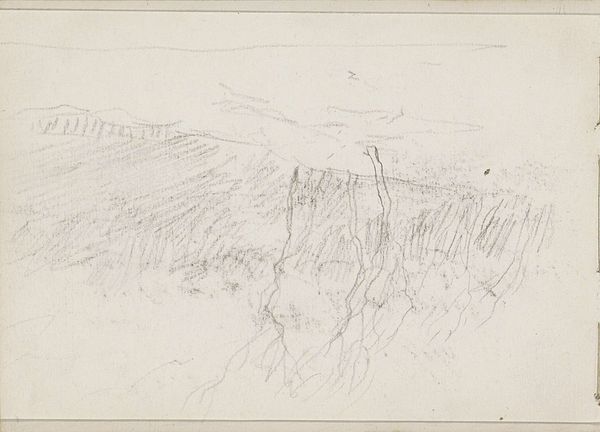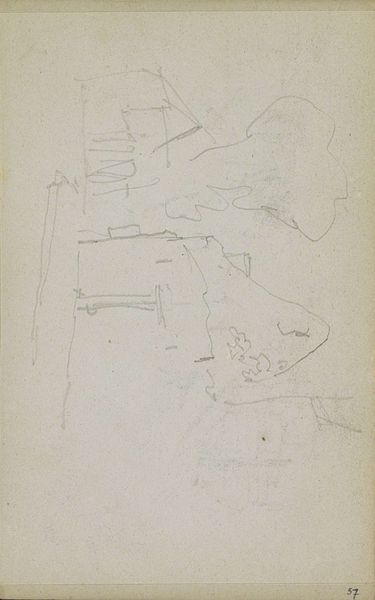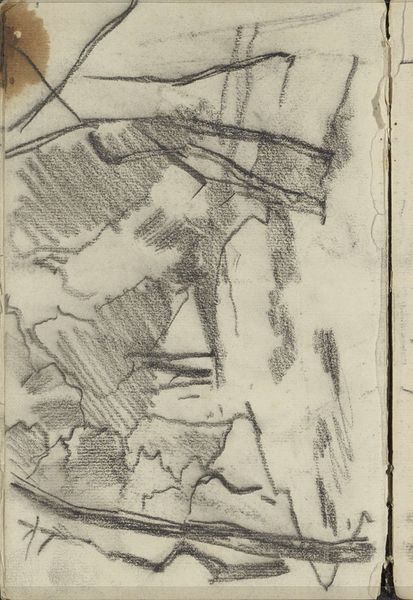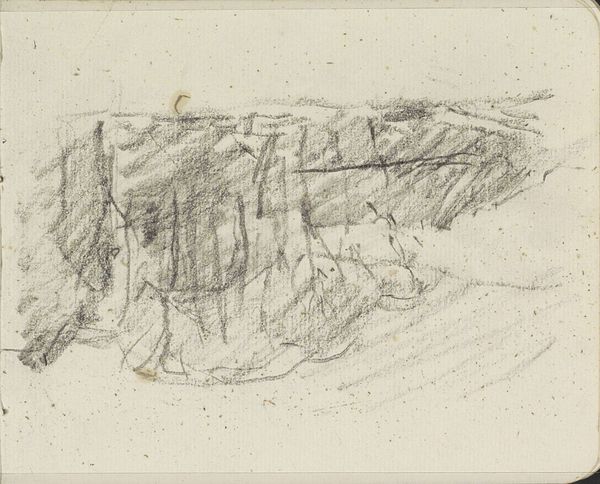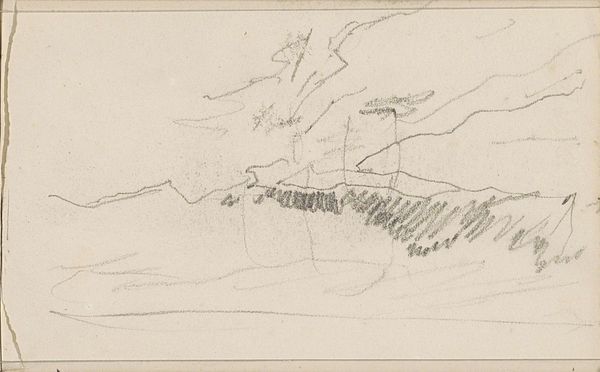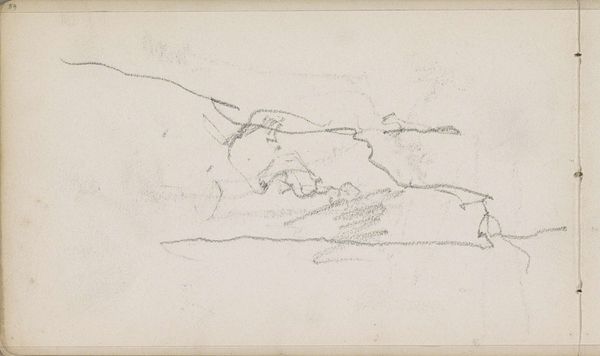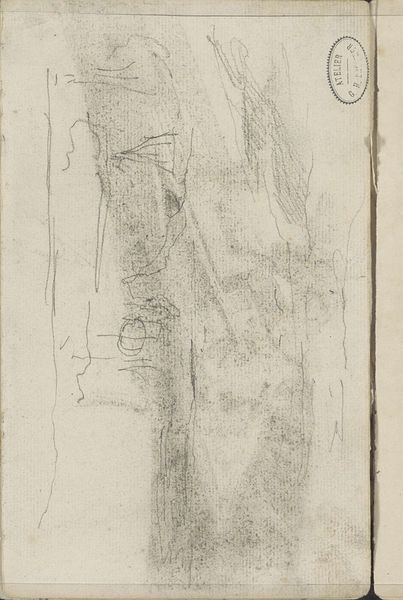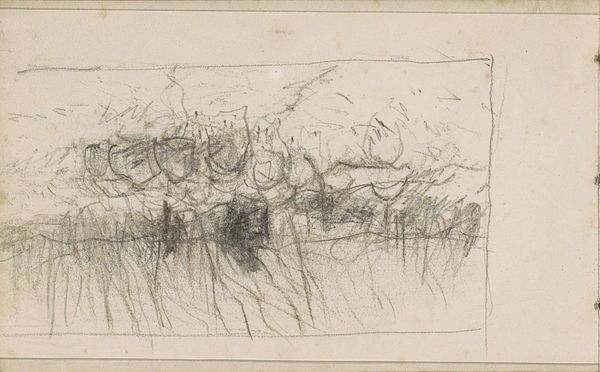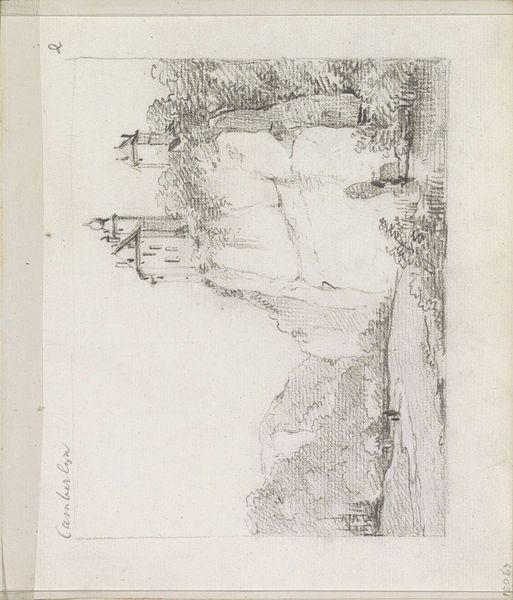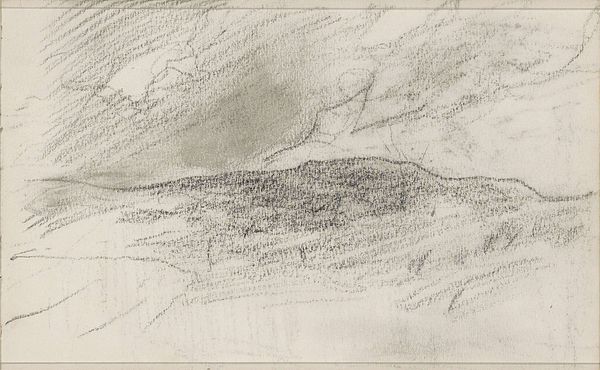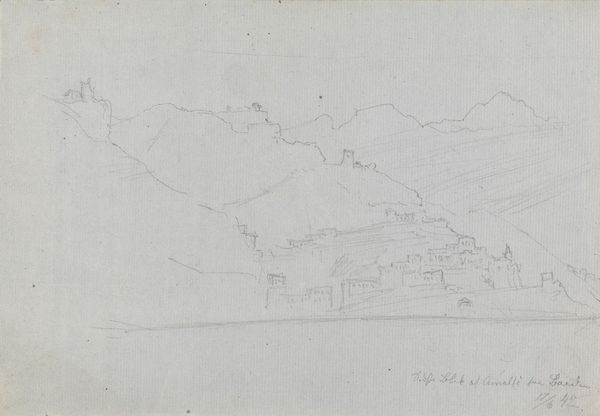
drawing, pencil
#
drawing
#
amateur sketch
#
toned paper
#
light pencil work
#
quirky sketch
#
pencil sketch
#
incomplete sketchy
#
landscape
#
personal sketchbook
#
pencil
#
sketchbook drawing
#
sketchbook art
#
realism
#
initial sketch
Copyright: Rijks Museum: Open Domain
Louis Apol sketched this scene of a cairn in Nova Zembla, possibly in the Kruisbaai, using graphite on paper. The artist uses the inherent qualities of graphite to capture a landscape that is stark and remote. With the contrast between light and shadow achieved through careful shading, the texture of the rocks and the vastness of the arctic environment become palpable. Apol's choice of graphite, a readily available and portable material, reflects the practical needs of an artist working in situ, perhaps even amidst the labor and exploration of the Dutch expeditions to the Arctic. The swift, assured strokes suggest an economy of effort, a kind of efficient labor in artistic form. The drawing underscores how the means of production – in this case, a simple pencil – can imbue a work with social significance, transforming a landscape into a document of human endeavor. This approach challenges traditional distinctions between fine art and craft, inviting us to consider the value of material, making, and context in understanding the full meaning of this drawing.
Comments
No comments
Be the first to comment and join the conversation on the ultimate creative platform.

